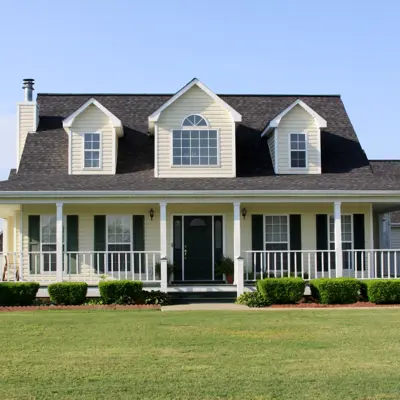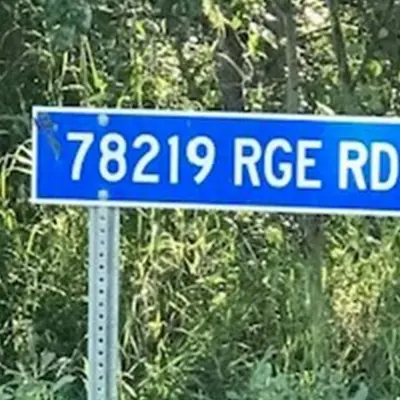Farmland Assessment
Farmland Assessments are governed and regulated by the Municipal Government Act (MGA), associated Regulations, and the applicable Minister’s Guidelines of Farmland Assessment. Farmland Assessments are completed on an annual basis, using the valuation date of July 1 of the year prior to the tax year.
The valuation standard for farmland assessment is based on “Agricultural Use Value”. In Alberta, the “Agricultural Use Value” is divided into three categories, each with farmland rates: Dryland Arable, Pasture Land, and Irrigated Arable. There are no Irrigated Farmlands found in Saddle Hills County.

Farmland Ratings and Application
The Farmland Rating System categorizes all areas of the province into 16 different Agro-Climatic Regions and four Irrigation Regions. Typical 'Net Income' has been established for each type of soil classification within the above-noted regions.
'Net Income' was established as the basis for “Agricultural Use Value” and reflects typical cropping rotations, yields, prices, and input costs of production. A soil group classification within an Agricultural Zone with the highest Net Income was assigned a rating of 100. All other soil groups are then ranked based on their net income relative to this.
As the physical land attributes diminish in agricultural production (ie. quality of land), a lesser rating is applicable to the affected farmland.
All of these factors can be summarized into two groups: Net Productivity Ratings and Cost of Production Ratings. Factors recognized in the Net Productivity Ratings include the soil class, cultivation depth and colour, subsoil, soil texture, saline or alkali, acidity, and flood delay. Factors recognized in the Cost of Production are adverse topography, stones, irregular shaped fields, obstacles, severance of fields, and other miscellaneous features affecting cost of production.
What qualifies for Farmland Status?
The Ministry of Municipal Affairs has developed strict guidelines and rules for land classified as 'Farmland'.
By definition, 'Farming Operations' means the raising, production, and sale of agricultural products and includes:
- Horticulture, Aviculture, Apiculture, and Aquaculture.
- The production of horses, cattle, bison, sheep, swine, goats, fur bearing animals, raised in captivity, domestic cervids within the meaning of the Livestock Industry Diversification Act, and domestic camelids.
- The planting, growing, and sale of sod.
Should any of the above activities take place on the parcel of land, the land would qualify for 'Farmland' status and be assessed as 'Agricultural Use Value'. 'Agricultural Use Value' means the value of a parcel of land based exclusively on its use for farming operations.
If the land is not used for farming operations as outlined above, the land cannot be assessed as 'Agricultural Use Value' and must be assessed at 'Market Value', as legislated.
Please note that when a parcel of land has qualified for 'Farmland' status, it is assessed using regulated rates (Agricultural Use Value) and this value has no relationship or reflection on the 'Market Value' of the property.

Farm Buildings and Residences
Farm Buildings
The definition of a 'Farm Building' is any improvement other than a residence, that is used for 'Farming Operations'. This can be broken down into the parts used for farming and those used for other purposes ie. 50% farming and 50% small business.
To be considered a 'Farm Building' it must be used in a 'Farming Operation' on your property. Without evidence of this, outbuildings and structures cannot be considered 'Farm Buildings'.
In rural Alberta, 'Farm Buildings' are exempt from assessment under Provincial legislation. As a result of this exemption, no property tax is paid on a 'Farm Building'.
Farm Residences
All 'Farm Residences' in rural municipalities are valued and assessed on the basis of 'Market Value'. The value of the 'Farm Residence' is adjusted based on positive or negative attributes of the property, size and features of the house, services to the property, and location.
'Farm Residences' can receive exemptions from the 'Market Value' assessment. In rural municipalities, the Provincial Government allows a 'Farm Residence' to be exempt on the basis of the amount of 'Farmland Assessment' in the owner’s unit. This is called a RIAER or RAP amount. The maximum exemption is $61,540 for the first residence and $30,770 for each additional residence.
More Information:
Contact Us
Saddle Hills
Junction of Hwy 49 & Secondary Hwy 725
RR1, Spirit River AB
T0H 3G0
T. 780-864-3760
Fax 780-864-3904
Toll-free 1-888-864-3760
frontdesk@saddlehills.ab.ca
Sign up to our Newsletter
Stay up to date on the Saddle Hills activities, events, programs and operations by subscribing to our eNewsletters.




